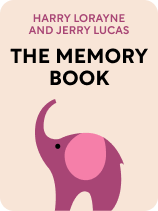

This article is an excerpt from the Shortform book guide to "The Memory Book" by Harry Lorayne and Jerry Lucas. Shortform has the world's best summaries and analyses of books you should be reading.
Like this article? Sign up for a free trial here.
Do you have trouble remembering people’s names? How might you make abstract information easier to recall?
We always use association, often subconsciously, to commit things to memory. In other words, we remember things in relation to each other. So, we can recall anything if we link it to another piece of information we already know. This is particularly helpful for abstract information, which is harder to remember.
Read on to learn how to use memory association techniques to memorize abstract data.
Memory Association Techniques
It’s easier to remember information that has a concrete meaning than information that’s abstract and intangible. For example, names are often more difficult to remember than other words because they don’t have any specific image or meaning associated with them. You likely can’t form a picture of a name like “Schaeffer” by itself, but you can picture a word that has tangible meaning, like “horse.”
So, when it comes to remembering abstract information (information you can’t readily picture in your mind), Lorayne and Lucas say that you can use memory association techniques, specifically creating associations using silly images.
The less tangible the information is, the harder it is to recall. So, you must add a step to associate the abstract information with neighboring words in a list.
| The Baker/baker Paradox Along with being easier to picture visually, tangible information is easier for us to remember because we usually already have existing associations with it. In Moonwalking With Einstein, Foer describes a test in which researchers show two different subjects the same person. The researcher tells one subject that the person is a baker and the other subject that the person’s surname is Baker. Later, the researcher asks both subjects for the word associated with the person. The subject who was told to remember “baker” is more likely to remember her word than the subject who was given the name “Baker” because the profession of baker carries its own associations—the smell of bread baking, the tall hat bakers wear, and so on. (These associations also make “baker” more tangible.) In contrast, the surname Baker has no existing associations with it except the image of the person (making it more abstract). |
In the following steps, you’ll learn how to picture an abstract piece of information concretely using similar-sounding words as a stand-in.
Step 1: Create a Stand-In Word or Phrase
First, the authors instruct you to create a word or phrase that you can picture to act as a stand-in for abstract information. The word or phrase doesn’t have to match the original word exactly, but it should sound similar enough that it makes you automatically think of the original word.
For example, say you’re trying to remember these street names in sequential order: Brosius Street, Courtney Street, and Durango Street. You’ll likely have trouble picturing anything specific for Brosius, Courtney, and Durango on their own, but you can use the sounds in the street names to come up with alternatives that are easier to visualize.
For Brosius Street, your stand-in phrase might be, “Bro, see us!” Picture a group of young men yelling the phrase while trying to get the attention of their friend. For Courtney Street, picture someone falling on a tennis court and hitting their knee. For Durango Street, imagine someone looking up at the sky and asking, “Where’d the rain go?”
(Shortform note: If you have trouble coming up with stand-in words and phrases, look for any homonyms (words that sound the same or are spelled the same but mean something different) of the original word. You may find some that have a more concrete, easy-to-visualize meaning. Alternatively, consult an online rhyming dictionary to find a rhyme or near-rhyme for your word. Rhymes and near-rhymes sound similar enough to the original word that they’re a strong reminder.)
Step 2: Connect the Stand-In Words or Phrases Through Silly Image Associations
Once you have a stand-in word or phrase for each item in the sequence you wish to remember, create associations between the list items as you did with Lorayne and Lucas’s first memorization technique. Associate each pair of list items by developing silly mental images that connect their stand-in words or phrases.
For example, to remember the sequence of the three street names, start by associating your stand-in for Brosius Street (“Bro, see us!”) with your stand-in for Courtney Street (court knee). To connect these two phrases in a memorable, silly way, you might imagine that the group of young men is yelling “Bro, see us” to their friend because the friend doesn’t realize he’s about to be crushed by a giant knee on a tennis court.
Then, associate “court knee” with “Where’d the rain go?” Maybe you imagine the person asking this question is standing on the tennis court, and the answer is that a giant knee is blocking the rain.
(Shortform note: Along with training your memory, creating silly, bizarre associations throughout the day may benefit you simply by entertaining you and making you laugh. According to some health experts, laughter—no matter what the source—has numerous health benefits. In the short term, laughter increases your oxygen intake, releases endorphins, lowers the stress response, and relaxes muscle tension. In the long term, it may increase your general life satisfaction, strengthen your immune system, and lessen pain.)

———End of Preview———
Like what you just read? Read the rest of the world's best book summary and analysis of Harry Lorayne and Jerry Lucas's "The Memory Book" at Shortform.
Here's what you'll find in our full The Memory Book summary:
- How to improve your memorization skills and recall any kind of information
- Techniques for remembering sequences of information
- How to picture and remember abstract information






